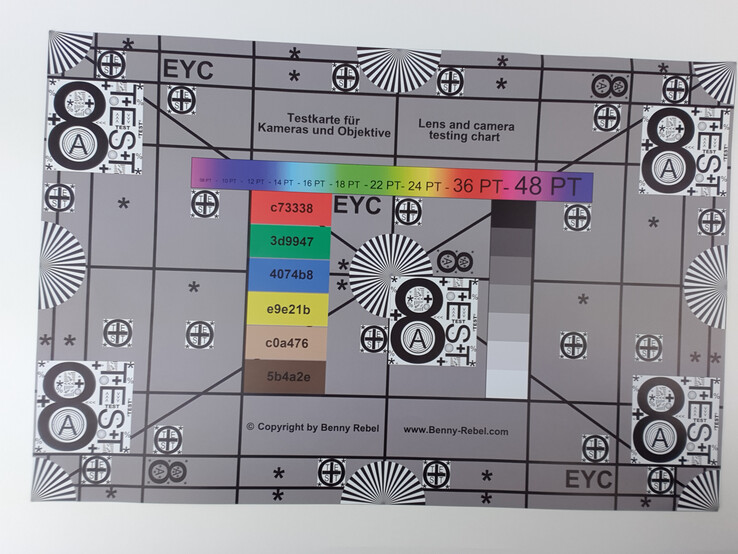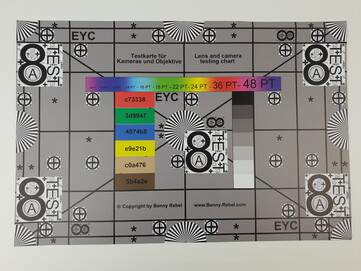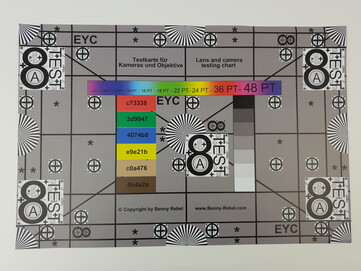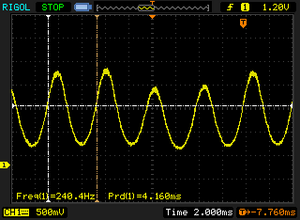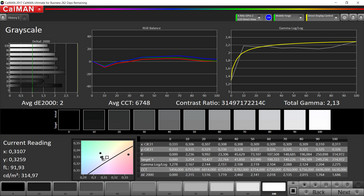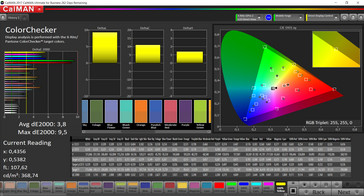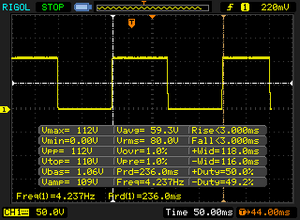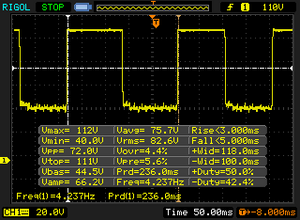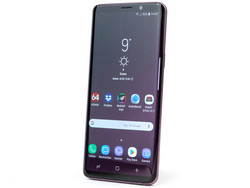Kort testrapport Samsung Galaxy S9 Smartphone
Top 10 Testrapporten
» Top 10 Multimedia Notebooks
» Top 10 Gaming-Notebooks
» Top 10 Budget Gaming Laptops
» Top 10 Lichtgewicht Gaming-Notebooks
» Top 10 Premium Office/Business-Notebooks
» Top 10 Budget Office/Business-Notebooks
» Top 10 Workstation-Laptops
» Top 10 Subnotebooks
» Top 10 Ultrabooks
» Top 10 Notebooks tot €300
» Top 10 Notebooks tot €500
» Top 10 Notebooks tot € 1.000De beste notebookbeeldschermen zoals getest door Notebookcheck
» De beste notebookbeeldschermen
» Top Windows Alternatieven voor de MacBook Pro 13
» Top Windows Alternatieven voor de MacBook Pro 15
» Top Windows alternatieven voor de MacBook 12 en Air
» Top 10 best verkopende notebooks op Amazon
» Top 10 Convertible Notebooks
» Top 10 Tablets
» Top 10 Tablets tot € 250
» Top 10 Smartphones
» Top 10 Phablets (>90cm²)
» Top 10 Camera Smartphones
» Top 10 Smartphones tot €500
» Top 10 best verkopende smartphones op Amazon
Size Comparison
| |||||||||||||||||||||||||
Helderheidsverdeling: 96 %
Helderheid in Batterij-modus: 529 cd/m²
Contrast: ∞:1 (Zwart: 0 cd/m²)
ΔE ColorChecker Calman: 1.4 | ∀{0.5-29.43 Ø4.78}
ΔE Greyscale Calman: 1.6 | ∀{0.09-98 Ø5}
Gamma: 2.16
CCT: 6358 K
| Samsung Galaxy S9 Super AMOLED, 2960x1440, 5.8" | Samsung Galaxy S8 Super AMOLED, 2960x1440, 5.8" | Google Pixel 2 AMOLED, 1920x1080, 5" | Apple iPhone X Super AMOLED, 2436x1125, 5.8" | Huawei Mate 10 Pro OLED, 2160x1080, 6" | LG V30 OLED, 2880x1440, 6" | Xiaomi Mi Mix 2 IPS, 2160x1080, 6" | |
|---|---|---|---|---|---|---|---|
| Screen | -35% | -9% | 11% | -4% | -98% | -64% | |
| Brightness middle (cd/m²) | 529 | 566 7% | 396 -25% | 600 13% | 629 19% | 432 -18% | 472 -11% |
| Brightness (cd/m²) | 527 | 564 7% | 404 -23% | 606 15% | 636 21% | 428 -19% | 430 -18% |
| Brightness Distribution (%) | 96 | 94 -2% | 91 -5% | 94 -2% | 94 -2% | 87 -9% | 87 -9% |
| Black Level * (cd/m²) | 0.27 | ||||||
| Colorchecker dE 2000 * | 1.4 | 2.7 -93% | 1.7 -21% | 1.2 14% | 1.7 -21% | 4.18 -199% | 3.5 -150% |
| Colorchecker dE 2000 max. * | 4 | 5.4 -35% | 4 -0% | 3 25% | 3.6 10% | 8.53 -113% | 5.9 -48% |
| Greyscale dE 2000 * | 1.6 | 3.1 -94% | 1.3 19% | 1.6 -0% | 2.4 -50% | 5.3 -231% | 4 -150% |
| Gamma | 2.16 102% | 2.15 102% | 2.3 96% | 2.23 99% | 2.15 102% | 2.33 94% | 2.29 96% |
| CCT | 6358 102% | 6335 103% | 6483 100% | 6707 97% | 6337 103% | 7487 87% | 7048 92% |
| Color Space (Percent of AdobeRGB 1998) (%) | 81.57 | ||||||
| Color Space (Percent of sRGB) (%) | 99.87 | ||||||
| Contrast (:1) | 1748 |
* ... kleiner is beter
Screen Flickering / PWM (Pulse-Width Modulation)
| Screen flickering / PWM waargenomen | 240.4 Hz | ||
De achtergrondverlichting van het scherm flikkert op 240.4 Hz (in het slechtste geval, bijvoorbeeld bij gebruik van PWM) . De frequentie van 240.4 Hz is redelijk laag en de meeste mensen die gevoelig zijn aan flickering kunnen dit dus waarnemen of geïrriteerde ogen krijgen (gebruikmakend van de vermelde helderheid en lager). Ter vergelijking: 53 % van alle geteste toestellen maakten geen gebruik van PWM om de schermhelderheid te verlagen. Als het wel werd gebruikt, werd een gemiddelde van 8098 (minimum: 5 - maximum: 343500) Hz waargenomen. | |||
Responstijd Scherm
| ↔ Responstijd Zwart naar Wit | ||
|---|---|---|
| 6 ms ... stijging ↗ en daling ↘ gecombineerd | ↗ 3 ms stijging | |
| ↘ 3 ms daling | ||
| Het scherm vertoonde erg snelle responstijden in onze tests en zou zeer geschikt moeten zijn voor snelle games. Ter vergelijking: alle testtoestellen variëren van 0.1 (minimum) tot 240 (maximum) ms. » 17 % van alle toestellen zijn beter. Dit betekent dat de gemeten responstijd beter is dan het gemiddelde (20.2 ms) van alle geteste toestellen. | ||
| ↔ Responstijd 50% Grijs naar 80% Grijs | ||
| 8 ms ... stijging ↗ en daling ↘ gecombineerd | ↗ 3 ms stijging | |
| ↘ 5 ms daling | ||
| Het scherm vertoonde snelle responstijden in onze tests en zou geschikt moeten zijn voor games. Ter vergelijking: alle testtoestellen variëren van 0.165 (minimum) tot 636 (maximum) ms. » 19 % van alle toestellen zijn beter. Dit betekent dat de gemeten responstijd beter is dan het gemiddelde (31.6 ms) van alle geteste toestellen. | ||
| AnTuTu v6 - Total Score (sorteer op waarde) | |
| Samsung Galaxy S9 | |
| Samsung Galaxy S8 | |
| LG V30 | |
| OnePlus 5T | |
| HTC U11 | |
| Google Pixel 2 | |
| Apple iPhone X | |
| Huawei Mate 10 Pro | |
| Gemiddeld Samsung Exynos 9810 (214090 - 222290, n=3) | |
| AnTuTu v7 - Total Score (sorteer op waarde) | |
| Samsung Galaxy S9 | |
| OnePlus 5T | |
| Xiaomi Mi Mix 2 | |
| Google Pixel 2 | |
| Apple iPhone X | |
| Huawei Mate 10 Pro | |
| Gemiddeld Samsung Exynos 9810 (236552 - 250577, n=3) | |
| Lightmark - 1920x1080 1080p (sorteer op waarde) | |
| Samsung Galaxy S9 | |
| Samsung Galaxy S8 | |
| HTC U11 | |
| Google Pixel 2 | |
| Huawei Mate 10 Pro | |
| Gemiddeld Samsung Exynos 9810 (34 - 35.8, n=2) | |
| Basemark X 1.1 | |
| Medium Quality (sorteer op waarde) | |
| Samsung Galaxy S8 | |
| HTC U11 | |
| Huawei Mate 10 Pro | |
| High Quality (sorteer op waarde) | |
| Samsung Galaxy S8 | |
| HTC U11 | |
| Huawei Mate 10 Pro | |
| Basemark ES 3.1 / Metal - offscreen Overall Score (sorteer op waarde) | |
| Samsung Galaxy S9 | |
| Samsung Galaxy S8 | |
| HTC U11 | |
| Google Pixel 2 | |
| Apple iPhone X | |
| Huawei Mate 10 Pro | |
| Gemiddeld Samsung Exynos 9810 (1436 - 1481, n=3) | |
| Gemiddelde van klas Smartphone (205 - 7731, n=35, laatste 2 jaar) | |
| Epic Citadel - Ultra High Quality (sorteer op waarde) | |
| Samsung Galaxy S8 | |
| HTC U11 | |
| Huawei Mate 10 Pro | |
| JetStream 1.1 - Total Score | |
| Apple iPhone X (IOS 11.1.1) | |
| HTC U11 (Chrome 58) | |
| Samsung Galaxy S9 (Samsung Browser 7.0) | |
| OnePlus 5T (Chrome 63) | |
| Samsung Galaxy S8 (Samsung Browser 5.2) | |
| Gemiddeld Samsung Exynos 9810 (62.9 - 69.6, n=4) | |
| Google Pixel 2 (Chrome 62) | |
| Huawei Mate 10 Pro (Chrome 61) | |
| LG V30 (Chrome 62) | |
| Octane V2 - Total Score | |
| Gemiddelde van klas Smartphone (2228 - 121337, n=197, laatste 2 jaar) | |
| Apple iPhone X (IOS 11.1.2) | |
| Samsung Galaxy S9 (Samsung Browser 7.0) | |
| Gemiddeld Samsung Exynos 9810 (12933 - 15233, n=4) | |
| Samsung Galaxy S8 (Samsung Browser 5.2) | |
| OnePlus 5T (Chrome 63) | |
| HTC U11 (Chrome 58) | |
| Google Pixel 2 (Chrome 62) | |
| LG V30 (Chrome 62) | |
| Huawei Mate 10 Pro (Chrome 61) | |
| Xiaomi Mi Mix 2 (Chrome 53) | |
| Mozilla Kraken 1.1 - Total | |
| LG V30 (Chrome 62) | |
| Huawei Mate 10 Pro (Chrome 61) | |
| Google Pixel 2 (Chrome 62) | |
| OnePlus 5T (Chrome 63) | |
| HTC U11 (Chrome 58) | |
| Xiaomi Mi Mix 2 (Chrome 53) | |
| Gemiddeld Samsung Exynos 9810 (2060 - 3189, n=4) | |
| Samsung Galaxy S9 (Samsung Browser 7.0) | |
| Samsung Galaxy S8 (Samsung Browser 5.2) | |
| Gemiddelde van klas Smartphone (257 - 28190, n=154, laatste 2 jaar) | |
| Apple iPhone X (IOS 11.1.2) | |
| WebXPRT 2015 - Overall | |
| Apple iPhone X (Safari Mobile 11.0) | |
| Samsung Galaxy S8 (Samsung Browser 5.2) | |
| Google Pixel 2 (Chrome 62) | |
| OnePlus 5T (Chrome 63) | |
| Gemiddeld Samsung Exynos 9810 (163 - 202, n=3) | |
| Samsung Galaxy S9 (Samsung Browser 7.0) | |
| HTC U11 (Chrome 58) | |
| Huawei Mate 10 Pro (Chrome 61) | |
| LG V30 (Chrome 62) | |
| Xiaomi Mi Mix 2 (Chrome 53) | |
* ... kleiner is beter
| Samsung Galaxy S9 | Samsung Galaxy S8 | LG V30 | HTC U11 | Xiaomi Mi Mix 2 | Huawei Mate 10 Pro | Gemiddeld 64 GB UFS 2.1 Flash | Gemiddelde van klas Smartphone | |
|---|---|---|---|---|---|---|---|---|
| AndroBench 3-5 | -14% | -29% | 27% | -8% | 151% | 38% | 616% | |
| Sequential Read 256KB (MB/s) | 815 | 793 -3% | 669 -18% | 717 -12% | 704 -14% | 732 -10% | 696 ? -15% | 2228 ? 173% |
| Sequential Write 256KB (MB/s) | 206.9 | 193.2 -7% | 193.2 -7% | 206.4 0% | 208.6 1% | 208.7 1% | 224 ? 8% | 1852 ? 795% |
| Random Read 4KB (MB/s) | 131 | 127.2 -3% | 78.2 -40% | 91.4 -30% | 148.5 13% | 132.3 1% | 137.2 ? 5% | 296 ? 126% |
| Random Write 4KB (MB/s) | 23.07 | 15.25 -34% | 10.21 -56% | 80 247% | 15.75 -32% | 164.4 613% | 84.7 ? 267% | 339 ? 1369% |
| Sequential Read 256KB SDCard (MB/s) | 79.2 ? | 63.9 ? -19% | 62.8 -21% | 68.8 ? -13% | 68.6 ? -13% | |||
| Sequential Write 256KB SDCard (MB/s) | 67.2 ? | 53.5 ? -20% | 47.2 -30% | 46.25 ? -31% | 52.2 ? -22% |
| Asphalt 8: Airborne | |||
| Instellingen | Waarde | ||
| high | 30 fps | ||
| Dead Trigger 2 | |||
| Instellingen | Waarde | ||
| high | 30 fps | ||
| Battle Bay | |||
| Instellingen | Waarde | ||
| full resolution | 60 fps | ||
| World of Tanks Blitz | |||
| Instellingen | Waarde | ||
| high, 0xAA, 0xAF | 60 fps | ||
| Arena of Valor | |||
| Instellingen | Waarde | ||
| high HD | 59 fps | ||
| Shadow Fight 3 | |||
| Instellingen | Waarde | ||
| high | 59 fps | ||
(+) De maximumtemperatuur aan de bovenzijde bedraagt 35.4 °C / 96 F, vergeleken met het gemiddelde van 35.2 °C / 95 F, variërend van 21.9 tot 247 °C voor de klasse Smartphone.
(+) De bodem warmt op tot een maximum van 36.2 °C / 97 F, vergeleken met een gemiddelde van 34 °C / 93 F
(+) Bij onbelast gebruik bedraagt de gemiddelde temperatuur voor de bovenzijde 22.9 °C / 73 F, vergeleken met het apparaatgemiddelde van 32.9 °C / 91 F.
Samsung Galaxy S9 audioanalyse
(+) | luidsprekers kunnen relatief luid spelen (86 dB)
Bas 100 - 315 Hz
(-) | bijna geen lage tonen - gemiddeld 23.1% lager dan de mediaan
(±) | lineariteit van de lage tonen is gemiddeld (11.5% delta ten opzichte van de vorige frequentie)
Midden 400 - 2000 Hz
(+) | evenwichtige middens - slechts 3.1% verwijderd van de mediaan
(+) | de middentonen zijn lineair (3.8% delta ten opzichte van de vorige frequentie)
Hoog 2 - 16 kHz
(+) | evenwichtige hoogtepunten - slechts 4.8% verwijderd van de mediaan
(+) | de hoge tonen zijn lineair (4.3% delta naar de vorige frequentie)
Algemeen 100 - 16.000 Hz
(±) | lineariteit van het totale geluid is gemiddeld (17.2% verschil met de mediaan)
Vergeleken met dezelfde klasse
» 10% van alle geteste apparaten in deze klasse waren beter, 8% vergelijkbaar, 82% slechter
» De beste had een delta van 11%, het gemiddelde was 35%, de slechtste was 134%
Vergeleken met alle geteste toestellen
» 31% van alle geteste apparaten waren beter, 8% gelijk, 61% slechter
» De beste had een delta van 4%, het gemiddelde was 24%, de slechtste was 134%
Google Pixel 2 audioanalyse
(+) | luidsprekers kunnen relatief luid spelen (89.4 dB)
Bas 100 - 315 Hz
(-) | bijna geen lage tonen - gemiddeld 27% lager dan de mediaan
(±) | lineariteit van de lage tonen is gemiddeld (8% delta ten opzichte van de vorige frequentie)
Midden 400 - 2000 Hz
(±) | lagere middens - gemiddeld 5.6% lager dan de mediaan
(+) | de middentonen zijn lineair (5.3% delta ten opzichte van de vorige frequentie)
Hoog 2 - 16 kHz
(±) | higher highs - on average 5.3% higher than median
(+) | de hoge tonen zijn lineair (4.7% delta naar de vorige frequentie)
Algemeen 100 - 16.000 Hz
(±) | lineariteit van het totale geluid is gemiddeld (20% verschil met de mediaan)
Vergeleken met dezelfde klasse
» 32% van alle geteste apparaten in deze klasse waren beter, 9% vergelijkbaar, 60% slechter
» De beste had een delta van 11%, het gemiddelde was 35%, de slechtste was 134%
Vergeleken met alle geteste toestellen
» 50% van alle geteste apparaten waren beter, 8% gelijk, 41% slechter
» De beste had een delta van 4%, het gemiddelde was 24%, de slechtste was 134%
HTC U11 audioanalyse
(±) | luidspreker luidheid is gemiddeld maar goed (81.4 dB)
Bas 100 - 315 Hz
(-) | bijna geen lage tonen - gemiddeld 24.5% lager dan de mediaan
(±) | lineariteit van de lage tonen is gemiddeld (13.3% delta ten opzichte van de vorige frequentie)
Midden 400 - 2000 Hz
(+) | evenwichtige middens - slechts 4.1% verwijderd van de mediaan
(±) | lineariteit van de middentonen is gemiddeld (7.4% delta ten opzichte van de vorige frequentie)
Hoog 2 - 16 kHz
(±) | higher highs - on average 5.1% higher than median
(+) | de hoge tonen zijn lineair (6.2% delta naar de vorige frequentie)
Algemeen 100 - 16.000 Hz
(±) | lineariteit van het totale geluid is gemiddeld (22.1% verschil met de mediaan)
Vergeleken met dezelfde klasse
» 46% van alle geteste apparaten in deze klasse waren beter, 7% vergelijkbaar, 47% slechter
» De beste had een delta van 11%, het gemiddelde was 35%, de slechtste was 134%
Vergeleken met alle geteste toestellen
» 63% van alle geteste apparaten waren beter, 6% gelijk, 31% slechter
» De beste had een delta van 4%, het gemiddelde was 24%, de slechtste was 134%
| Uit / Standby | |
| Inactief | |
| Belasting |
|
Key:
min: | |
| Samsung Galaxy S9 3000 mAh | Samsung Galaxy S8 3000 mAh | HTC U11 3000 mAh | Google Pixel 2 2700 mAh | Apple iPhone X 2716 mAh | Xiaomi Mi Mix 2 3771 mAh | Gemiddeld Samsung Exynos 9810 | Gemiddelde van klas Smartphone | |
|---|---|---|---|---|---|---|---|---|
| Power Consumption | -14% | -62% | -40% | -85% | -64% | -49% | -70% | |
| Idle Minimum * (Watt) | 0.65 | 0.78 -20% | 0.73 -12% | 0.99 -52% | 1.03 -58% | 0.69 -6% | 0.783 ? -20% | 0.842 ? -30% |
| Idle Average * (Watt) | 0.81 | 1.1 -36% | 1.96 -142% | 1.35 -67% | 2.4 -196% | 2.03 -151% | 1.315 ? -62% | 1.439 ? -78% |
| Idle Maximum * (Watt) | 0.92 | 1.16 -26% | 1.98 -115% | 1.37 -49% | 2.6 -183% | 2.1 -128% | 1.903 ? -107% | 1.624 ? -77% |
| Load Average * (Watt) | 4.76 | 4.15 13% | 4.82 -1% | 3.25 32% | 2.96 38% | 3.18 33% | 5.76 ? -21% | 7.03 ? -48% |
| Load Maximum * (Watt) | 5.16 | 5.12 1% | 7.15 -39% | 8.56 -66% | 6.6 -28% | 8.73 -69% | 7.06 ? -37% | 11.3 ? -119% |
* ... kleiner is beter
| Samsung Galaxy S9 3000 mAh | Samsung Galaxy S8 3000 mAh | LG V30 3300 mAh | HTC U11 3000 mAh | Google Pixel 2 2700 mAh | Apple iPhone X 2716 mAh | Xiaomi Mi Mix 2 3771 mAh | Huawei Mate 10 Pro 4000 mAh | |
|---|---|---|---|---|---|---|---|---|
| Batterijduur | 46% | 57% | 9% | 9% | 11% | 27% | 79% | |
| Reader / Idle (h) | 19.7 | 27.8 41% | 31.9 62% | 20.8 6% | 24.3 23% | 21.5 9% | 29.1 48% | |
| H.264 (h) | 10.2 | 12.9 26% | 13.7 34% | 8.3 -19% | 9.4 -8% | 10.6 4% | 15.5 52% | |
| WiFi v1.3 (h) | 7.9 | 12 52% | 12.9 63% | 9.3 18% | 9.6 22% | 9.4 19% | 10 27% | 13.6 72% |
| Load (h) | 2.7 | 4.4 63% | 4.5 67% | 3.5 30% | 2.7 0% | 3 11% | 6.6 144% |
Pro
Contra
Voor het volledige, Engelse testrapport, klik hier.
We verkiezen de Samsung Galaxy S9 boven de grotere S9+. Het apparaat is niet zo lomp en de dubbele camera is de meerprijs niet waard. Opnieuw levert de Koreaanse fabrikant een geweldige smartphone, maar de Galaxy S9 voelt eerder als een facelift voor de Galaxy S8 en het apparaat wordt nog steeds geplaagd door enkele gebreken. Vooral de looptijden zijn in vergelijking met de oude S8 aan de korte kant. Dit zal vooral steken bij consumenten die de telefoon ge-pre-ordered hebben voor de volledige prijs, aangezien zij nu alleen maar kunnen hopen dat Samsung dit probleem via een update zo spoedig mogelijk verhelpt.
Samsung moet zo spoedig mogelijk de korte batterijlevensduur verhelpen, aangezien de Galaxy S9 de potentie heeft om een geweldige smartphone te zijn.
Nog steeds is het een geweldig product: een snelle processor, geweldig beeldscherm, betere locatie voor vingerafdrukscanner, uit te breiden geheugen, goede stereo luidsprekers, stof- en waterdichte behuizing en een optionele Dual-SIM variant is slechts een greep uit de lange lijst sterke punten. Echter, bepaalde functionaliteiten die groots werden geadverteerd zoals AR Emoji en de super-slow-motion functie blijken meer speeltjes te zijn dan echt waarde toe te voegen aan het product.
Als je al in bezit bent van een Galaxy S8 is er geen reden om te upgraden naar een Galaxy S9.
Samsung Galaxy S9
- 31-08-2022 v7 (old)
Daniel Schmidt












